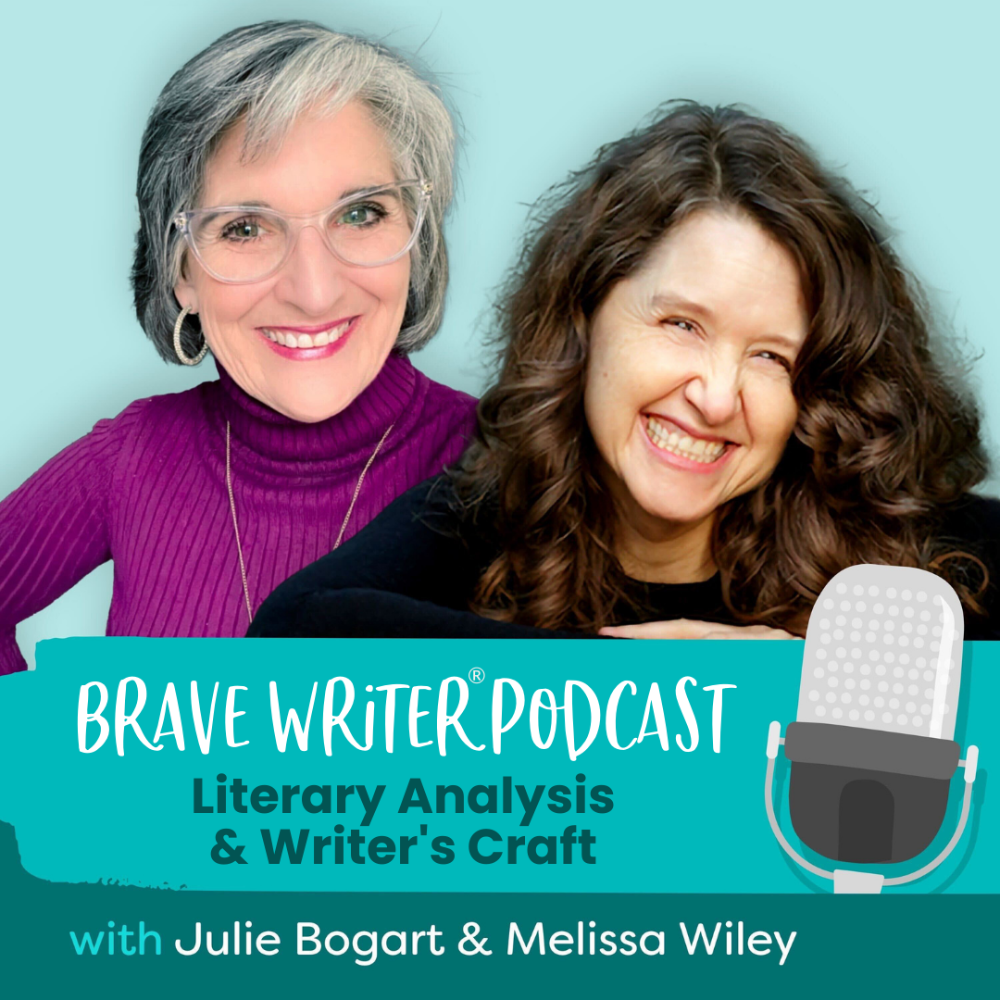[Podcast #253] Literary Analysis & Writer’s Craft

Literary analysis shouldn’t be a cold dissection that increases the distance between the reader and the text, but rather a way for the reader to more deeply engage with the text.
Today’s podcast is a rebroadcast of a training webinar where we talk about Brave Writer’s approach to teaching literary analysis and writer’s craft to your kids.
Noticing a writer’s craft can start before your child even learns how to read! Daily read-aloud time, with pauses to notice feelings about the text and guess what comes next, builds your child’s critical thinking skills. Literary analysis doesn’t need to be bound to books either–using a remote while watching TV shows or movies can work in much the same way.
Also, if you find this episode helpful, be sure to check out our Brave Writer 101 training, where we coach you on giving kinder, more meaningful writing instruction to your child.
Show Notes
Noticing
The first step of literary analysis is to notice how a text makes you feel. You can start teaching your kids this before they can even read or write themselves. Read aloud to them every day and pause to ask them questions about how the text is making them feel—nervous, sad, happy, excited? You can do this with TV shows and movies too. Teach them how to notice how the material makes their body feel.
Naming
The next step in literary analysis is to recognize the author intended the reader to feel a certain way, and that they used literary devices to achieve their goal. You can teach literary devices by having your student identify them in text. Then you can have your student master them in their own writing. This stage of literary analysis education gives your child the vocabulary to more deeply discuss their interaction with the text and appreciate the writer’s craft.
Thinking Critically
The final step of literary analysis is critical thinking (all these steps are part of an ongoing cycle, of course). This is where you engage your student in questions like: Why did the author want to make the reader feel a certain way? Did they achieve their goal? How does a reader’s own context shape how they interpreted the text? Critical thinking is the ultimate goal in teaching your child about writing.
Resources
- Start a free trial of CTCmath.com to try the math program that’s sure to grab and keep your child’s attention.
- Find “Becoming a Critical Thinker” in the Brave Writer Book Shop.
- Check out all class descriptions here.
- Take a look at the Braver Writer fall class schedule.
- Sign up for Brave Writer 101.
- Sign up for our Text Message Pod Ring to get podcast updates and more!
- Send us podcast topic ideas by texting us: +1 (833) 947-3684
Connect with Julie
- Instagram: @juliebravewriter
- Threads: @juliebravewriter
- Twitter: @bravewriter
- Facebook: facebook.com/bravewriter
Connect with Melissa
- Website: melissawiley.com
- Substack: melissawiley.substack.com
- Instagram: @melissawileybooks
- Twitter: @melissawiley
Produced by NOVA Media


















